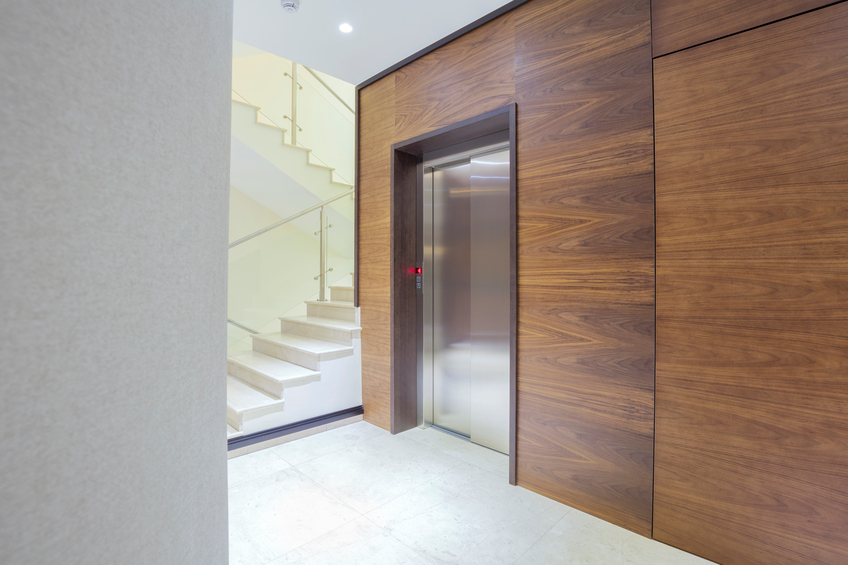Considerations When Installing a Residential Lift
Contents |
Introduction
Lifts were first created to solve the problem of vertical transport for people, animals and goods as buildings became taller. Residential lifts have become essential to society, as they allow a varied group of people to have access to all areas of a property
Since the first lift, which was recorded in history by Roman architect Vitruvius to have been built by Archimedes in 236 BC, lifts and lift technology have changed and evolved greatly.
Users
Lifts allow an increasingly ageing population to remain independent in their own homes. From 1974 to 2014, the average age of the UK population increased from 33.9 years to 40 years – an increase of 6 years.
The installation of home lifts has also allowed people with physical disabilities or illnesses that restrict their movement to access any space or room in their homes.
However, home lifts are not just used by people with physical limitations. The vast majority of users opt for a residential lift to simplify their movement within their homes. Access inside houses with several floors, whether they are refurbished properties or new constructions, is made easier with a lift.
Types of Home Lifts
There are several different types of lifts for the home, including:
- Hydraulic passenger lifts that can carry a large amount of weight, fit many people and carry large goods between floors.
- Lifts for stairs can be attached to the side of an existing staircase, so major alterations to the home are not needed.
- Disabled access lifts, such as platform lifts, which allow wheelchair users to easily overcome any staircases, no matter how many steps they have.
Lift Specifications
Different homes will require different lifts. The size of the cabin will depend on the number of people that will be using the lift, as well as their needs, and the pit size will depend on the features of the house. Some lifts can be installed without excavation, while others require a deep pit to be created.
Automatic sliding doors are easier to operate than accordion-style doors, which can prevent an elderly or disabled person from using the lift effectively.
It is also critical to consider other specifications of the lift, such as weight limitations, safety features, maximum travel speed and maximum floors allowed in a single journey.
Design
Whether modern or traditional, they need to be able to match the existing interior design – they can also clash with it in an aesthetically pleasing way if the user prefers.
Glass lifts can blend in seamlessly with their surroundings, so that they remain as hidden as possible. This option is popular with homeowners who want their décor to be visible at all times. Scenic lifts offer luxury and are visually appealing, which can complement the interior design of the home.
There are many different types of lifts, and there is also the possibility of going bespoke – meaning that the home lift will be unique to a particular user and cannot be found anywhere else.
Find out more
Related articles on Designing Buildings Wiki
- Access and inclusion in the built environment: policy and guidance.
- Access consultant.
- Approved document M.
- Changing lifestyles.
- Firefighting lift.
- Hoists.
- Home lifts.
- Inclusive design.
- Lift motor room.
- Lift Standards: EN 81-20 and EN 81-50.
- Lifts.
- Lifts and Escalators: A Quality Perspective.
- Lifts for office buildings.
- Lifting Operations and Lifting Equipment Regulations (LOLER).
- Non-discriminatory building design.
- Platforms lifts and how they benefit people.
- Railings.
- Ramps.
- Stairs.
- The importance of service lifts.
- The science of lifts.
--Nathan Massey 14:42, 11 Jul 2017 (BST)
Featured articles and news
Ebenezer Howard: inventor of the garden city. Book review.
The Grenfell Tower fire, eight years on
A time to pause and reflect as Dubai tower block fire reported just before anniversary.
Airtightness Topic Guide BSRIA TG 27/2025
Explaining the basics of airtightness, what it is, why it's important, when it's required and how it's carried out.
Construction contract awards hit lowest point of 2025
Plummeting for second consecutive month, intensifying concerns for housing and infrastructure goals.
Understanding Mental Health in the Built Environment 2025
Examining the state of mental health in construction, shedding light on levels of stress, anxiety and depression.
The benefits of engaging with insulation manufacturers
When considering ground floor constructions.
Lighting Industry endorses Blueprint for Electrification
The Lighting Industry Association fully supports the ECA Blueprint as a timely, urgent call to action.
BSRIA Sentinel Clerk of Works Training Case Study
Strengthening expertise to enhance service delivery with integrated cutting-edge industry knowledge.
Impact report from the Supply Chain Sustainability School
Free sustainability skills, training and support delivered to thousands of UK companies to help cut carbon.
The Building Safety Forum at the Installershow 2025
With speakers confirmed for 24 June as part of Building Safety Week.
The UK’s largest air pollution campaign.
Future Homes Standard, now includes solar, but what else?
Will the new standard, due to in the Autumn, go far enough in terms of performance ?
BSRIA Briefing: Cleaner Air, Better tomorrow
A look back at issues relating to inside and outside air quality, discussed during the BSRIA briefing in 2023.
Restoring Abbotsford's hothouse
Bringing the writer Walter Scott's garden to life.
Reflections on the spending review with CIAT.
Retired firefighter cycles world to raise Grenfell funds
Leaving on 14 June 2025 Stephen will raise money for youth and schools through the Grenfell Foundation.
Key points for construction at a glance with industry reactions.
























